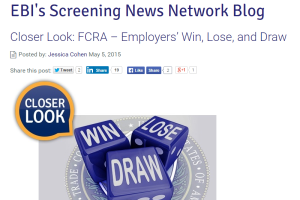
How can B2B salespeople (and the sales organisations they work for) identify and engage the prospects that are most likely to buy from them?
In even the most successful B2B sales organisations there is always a significant fall-off between the number of qualified sales opportunities that enter the top of the sales funnel and the number that eventually emerge as customers.
In less effective sales organisations, this fall-off from top to bottom of funnel is significantly higher – and often happens later in the sales cycle, compounded by the number of “zombie deals” that have somehow managed to remain in the sales pipeline despite showing no recent signs of life.
If we’re destined to lose, then we had better lose early – before we have invested significant resources in pursuing a set of opportunities that are never likely to buy from us. But that takes discipline, and a determination to ruthlessly weed out weak opportunities…
This determination to weed out weak deals early by conducting effective sales opportunity qualification is one of a handful of qualities that consistently distinguish top sales performers from the rest. But how can we tell which opportunities to focus our energies on?
The question of which prospects are likely to buy from us really needs to be broken down into two constituent parts: first, we have to establish the chances that the “prospect” is actually likely to do anything, and then we have to determine the chances that they will end up selecting us as their preferred solution option.
A growing number of clients have woken up to this, and are requiring that sales people separately evaluate these two probabilities in their CRM solutions before calculating a blended weighted opportunity probability (probability of action * probability of winning) as a way of dramatically improving sales forecast accuracy.
Judging these two probabilities separately, and then combining them in a weighted value, usually results in a lower but far more accurate assessment of the likelihood that any individual opportunity will close. It’s certainly a far better approach than applying the same default probability to every opportunity at a given stage.
Here’s how I’ve been encouraging sales teams to think about this:
1: DISTINGUISHING BETWEEN INTEREST AND INTENT
If we’re to answer the first question, we need to distinguish between interest and intent, and the failure to do this is why so many sales pipelines are artificially bloated with so-called “opportunities“ that are, by any rational analysis, never actually likely to do anything.
Here’s why: interesting needs will cause our prospects to start investigating their options. Important needs will cause them to evaluate short-listed solutions. But only truly critical needs will guarantee that they will buy. That’s not to say that interesting or important needs don’t sometimes drive buying decisions. But only by uncovering or developing truly critical needs can we be sure that our prospect will inevitably decide to actually do something.
How can we distinguish between interest and intent? One simple way is to ask them what would happen if they eventually decided to stick with the status quo. If their answer is “we could cope”, we’ve got to question their motivation – or do something that will increase it.
2: CONVERTING INTENT INTO ACTION
Let’s assume that we’ve confirmed our prospect’s intent to act. Does having the “best” solution guarantee success? It’s a mistake that many tech-based businesses (in particular) seem to make. The problem is that the modern buyer expects every vendor to claim that they are better, and therefore will tend to discount or devalue any and all such assertions.
If we’re to satisfy the modern, well-educated buyer, we need to do more than claim that our solution is better. In fact, in many situations, we are better off challenging their perception of what they need, by introducing a new aspect of the problem they are trying to solve that they may not have previously considered. The folks at Corporate Visions refer to this as “unconsidered needs”, and it’s a very powerful concept.
Offering a marginally “better” solution to the problem they thought they had is rarely very compelling. Opening their eyes to some previously unrecognised consequences of their situation is much more likely to stick in their minds, and to differentiate us from the other options they may be considering.
ENGAGING EARLY WITH THE PROSPECT
Of course, it’s much easier to influence our prospect’s thinking if we engage with them at an early stage of their buying decision journey. It’s what a long-term client of mine refers to as “finding them while the cement is still wet”. It’s a very relevant metaphor: once their thinking about what they need has solidified, it’s significantly more difficult to reframe their thinking.
I asked him to share his experiences, and here’s what he said: “I always want to know where the prospect was in their decision-making cycle when we first made contact with them. I’m always very wary when we seem to have arrived late to the party, and are restricted to answering an RFP we had no ability to influence.”
His inclination is borne out by the experiences of many similar organisations: failing to find the prospect when their needs have not yet been fully defined inevitably means playing a high-risk low-reward game of catch-up, with win rates in the low single digits.
IN CONCLUSION
I recommend that you take a careful look at your current pipeline. If you haven’t engaged early, distinguished between interest and intent, or taken steps to improve your chances of turning intent into action, it’s likely that your prospects will decide to go with an alternative vendor who has managed to better address the needs of today’s well-educated B2B buyer. Or they will decide to do nothing, despite all the effort you and every other vendor may have invested in them.
Business & Finance Articles on Business 2 Community
(24)
Report Post





